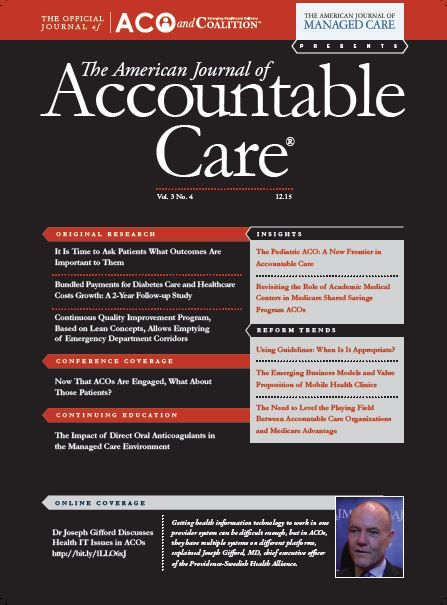Publication
Article
Population Health, Equity & Outcomes
The Debate Over Drug Costs: Instead of "How Much" We Spend, Let's Focus on What We Get in Terms of Health
Author(s):
Recent opinion polls report that access to prescription drugs is a major and growing concern and that a majority of Americans of both political parties support government action to hold down drug costs. A recent JAMA study reported that from 1999 to 2012, the number of American adults using prescription drugs rose from 51% to 59%, and those who took 5 or more medications nearly doubled from 8.2% to 15%.1 Given this utilization trend, rising prices, and the negative clinical consequences of cost-related nonadherence, prescription drug spending has become a hot issue on the presidential campaign trail and was the subject of a recent forum convened by the Obama administration to solicit ideas from consumer advocates, clinicians, health science companies, insurers, and employers. One highly publicized solution is the setting of drug prices on the relative amount of health produced.
Controversies over more clinically nuanced value-based pricing methods, such as those proposed by the American Society of Clinical Oncology and the Institute for Clinical Economic Review, get even more complicated when one contemplates the challenges of making any such formula a reality. These complexities, while recognizing legitimate concerns over access to potentially life-altering medications, are obfuscating an equally important challenge: reducing spending on clinical services that lack scientific evidence for improving individual or population health. One must remember that the federal government requires evidence from randomized controlled trials on safety and efficacy prior to approval only for prescription drugs—which make up approximately 12% of US healthcare costs. A similar evidentiary benchmark is not required for the remaining 88% of medical spending, such as expenditures for clinician visits, laboratory tests, imaging, and surgical interventions. In his recent NEJM commentary, “Toward Evidence-Based End-of-Life Care,” Scott D. Halpern, MD, PhD, brought light to this inconsistency, in that “no current policy or practice designed to improve care for millions of dying Americans is backed by a fraction of the evidence that the FDA would require to approve even a relatively innocuous drug.”2
Before isolated scrutiny on drug prices leads to the restricted use of evidence-based services that may be deemed as too expensive (cost-ineffective), we must intensify our efforts to reduce utilization of costly medical services that produce little or no clinical benefit across the entire spectrum of care delivery, such as antibiotic therapy for viral respiratory illness and high-cost imaging for people suffering from musculoskeletal back pain and dizziness.3 Such an approach would free up billions of dollars that could be spent on services for which solid evidence of health benefits exists, such as US Preventive Services Task Force—recommended screenings and counseling and guideline-recommended drug therapies that are systematically underused in many chronic conditions including heart disease, depression, diabetes, and HIV.
Stories reporting increases in drug spending should not be immediately interpreted as “the sky is falling.” We should only make that judgment once we compare the corresponding health improvement resulting from incremental pharmaceutical spending—or any innovation for that matter—to the patient-centered outcomes achieved by other healthcare expenditures.REFERENCES
1. Kantor ED, Rehm CD, Haas JS, Chan AT, Giovannucci, EL. Trends in prescription drug use among adults in the United States from 1999-2012. JAMA. 2015;314(17):1818-1830.
2. Halperin SD. Toward evidence-based end-of-life care. N Engl J Med. 2015;373(21):2001-2003.
3. Clinician lists. Choosing Wisely website. http://www.choosingwisely.org/clinician-lists/. Accessed November 2015.


